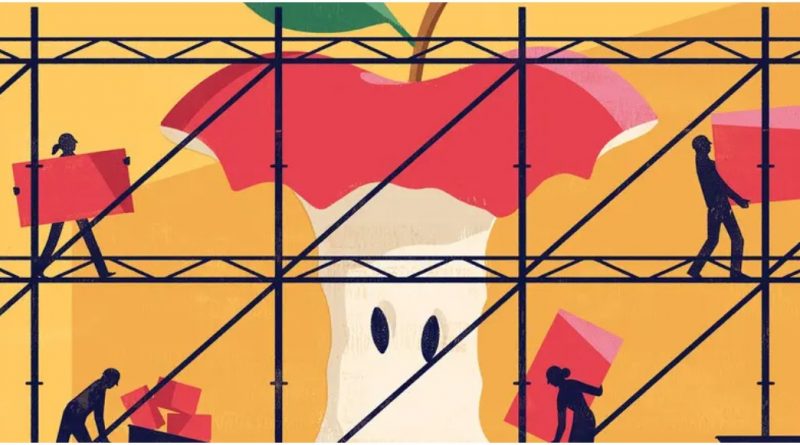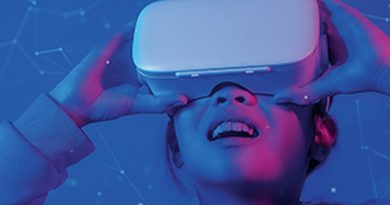Paul Tough on Fixing Higher Education’s Broken System
For his book The Inequality Machine: How College Divides Us (Houghton Mifflin Harcourt, 2019), journalist Paul Tough, an expert on the conditions children need for success, visited homes, high schools, and colleges in 21 states to study the state of higher education. He encountered a selective system that caters to those in wealthier income brackets and creates roadblocks that exacerbate economic divides in adulthood—counter to the narrative we often hear about the equalizing power of higher education. What do these findings reveal for the K–12 educators and caregivers guiding young people through school? What needs to change to create more equal opportunities for students after high school?
What exactly is the “inequality machine” you refer to in your book’s title?
Our system of higher education has become one that is perpetuating inequality for individual students. It can still do great things; it can add to people’s social mobility, it can change people’s lives. But on the whole, it’s creating barriers and reducing opportunities for lots of students, especially students from low-income backgrounds. The pandemic has made those inequalities even more apparent. We can’t see the total landscape yet, but families who had a lot of financial resources were mostly able to weather the pandemic educationally and otherwise—it didn’t alter their college-going patterns in a big way, whereas lower-income high school graduates’ college-going numbers went down considerably. Community college numbers have also gone down.
Why isn’t the country’s current model of higher education serving young people well?
There are two big reasons it’s not working. One, we have a very stratified system in which certain institutions are giving young people great opportunities, and others are not. Rich kids are more likely to go to the more successful institutions, and kids who are working class or growing up in poverty are mostly going to places that are poorly funded and have low graduation rates—often because they lack the support system that students need to make it through. That’s problem number one.
The second problem is that college is way too expensive. Over the last few decades, we’ve quietly changed our system from one that allowed people from working class backgrounds to get a reasonably priced education that would improve their opportunities, to a system with dramatically reduced public funding that puts the financial burden on individual students and their families. This has turned the process of getting a college education—which benefits not only students but also their families and communities and the whole country—into something that is extremely difficult for a typical student to pull off without incurring a lot of debt.
You’ve written in the past about what hinders and helps children’s success. What surprised you the most about students’ transition to young adulthood?
In my earlier books How Children Succeed and Helping Children Succeed I wrote about the psychological or noncognitive processes in kids’ brains and minds, and how important those are to their success. Those same processes matter in college; when you are able to persist despite difficulties and exercise self-control, you’re going to have a much higher chance of success in college. But regardless of your character, it’s hard to persist in a system where there are so many forces working against you—when your family is going into debt to get you a college education, when you’re trying to negotiate a college campus where there aren’t a lot of people from your economic or racial background. Those external factors make a student’s internal psychological processes much more difficult. But because we’ve framed that struggle for individual students as an internal struggle, as something they can overcome with the right amount of willpower, even when we’ve rigged the game against them, we make them feel like their failure is individual rather than systemic or societal. In reality, the system isn’t working fine for most students from disadvantaged backgrounds, even though there are some kids who miraculously make it through.
You say the system “isn’t working.” What does that brokenness look like in terms of specific pieces?
Let’s divide the not-working into three different categories: admissions, finances, and persistence. In terms of admissions, the system tends to sort students into institutions based on their family background, partly because of the weight we put on standardized tests. Kids from lower-income backgrounds are mostly sorted into less-selective, lower-resourced institutions, while kids from higher-income backgrounds are sorted into more selective, higher-resourced institutions. We give the better education to the kids who need the boost the least.
The amazing thing about higher education is that it can absolutely change students’ lives and trajectories. It just doesn’t happen often enough.
Paul Tough
Second, there’s the huge price tag and the ineffective way we organize financial aid. The responsibility of negotiating a complicated bureaucracy is on students rather than on the institution, and it’s easy to miss a deadline or not fill out a form correctly, which can derail a student who is already struggling.
Third is persistence; we’re not doing enough to support students who are facing other obstacles in their lives, whether that’s through academic support, emotional support, or mentoring. Young people need someone to say to them, “Here are the courses you need to take, here’s how to afford college, here’s how to deal with a roommate who’s driving you nuts, here’s how to deal with a professor who doesn’t care whether you pass or fail.” When institutions can create support systems that help kids feel like they belong and help them negotiate the bureaucracy, dropout rates are much lower. But when there are budget cuts, those supports tend to be the first thing that goes away.
What would you suggest to school counselors and other K–12 educators who want to help students make sense of a complicated post-graduate landscape?
I sympathize with high school principals and counselors and teachers, because in a broken system, it’s hard to know the right path to steer students toward. We need to give students advice that fits the higher education world as it is, rather than the world we wish we had, even as we figure out ways to change the system. For now, I think we need to do a better job of helping students take cost and debt into account, even if it means sacrificing what might seem like a dream school. We’ve got to help students figure out how to find lower-cost options and make them work. The public needs to shoulder more of the costs. K–12 educators can be an important voice in making that change happen.
Ideally, all this pressure should not be on high school advisors—we need to fix the whole system of higher education funding and equity—but I think it’s also important for counselors to learn about every possible option out there and find ways to pass that knowledge on to students.
What solutions do you see for making college and career pathways more accessible?
There are some smaller, innovative programs that are exciting experiments. PelotonU in Austin—connected with Southern New Hampshire University—is developing a hybrid arrangement that’s flexible and cheap and allows students to get a degree on their own time, combining an online degree with in-person mentoring and support and community. The model isn’t perfectly worked out yet, but it’s a type of place in which systems should invest more of their money and attention. In Chicago, Arrupe College is connected to Loyola University and focuses on low-income Chicago high school graduates who don’t have great test scores or GPAs. The college gives them a two-year degree that will move them into a four-year college. On a systemic level, I’m not super optimistic, but there are ways that the Biden administration is at least looking into big solutions in terms of college financing.
What about for students who are seeking options besides college?
Our system for non-college postsecondary options is also pretty broken. Some European countries have great models of apprenticeships and internships and career education. It would be nice if our community colleges played that role—if they were better-resourced and easier to negotiate, if they offered students straightforward paths to certain careers. But it’s also true that a lot of college advising in the past decade has focused on this algorithm that the best way to succeed in college is to go to the most selective institution that will have you. In reality, that’s not always true. But the power of that algorithm creates so much pressure that students and high school counselors don’t feel like there’s a lot of flexibility to experiment, try different things, or take time to figure out what feels like the right path.
What did the students you interviewed for the book tell you about their experiences?
Despite my dire tone, a lot of the young people I met in my reporting—usually when they were high school students or college freshmen—have gone on to have awesome college experiences. They often struggled at the beginning, but college has completely changed their lives. Ivonne, a young woman who I wrote about when she was a struggling freshman in a calculus class at the University of Texas, graduated as a math major, and now she’s at Harvard in a graduate program in data science. KiKi, who I met when she was a high school junior in North Carolina, went to Princeton and is now off at Cambridge University studying philosophy. The amazing thing about higher education is that it can absolutely change students’ lives and trajectories. It just doesn’t happen often enough. Stories like Ivonne’s and KiKi’s feel sort of miraculous, but they should happen much more frequently.
Source: https://www.ascd.org/el/articles/paul-tough-on-fixing-higher-educations-broken-system




